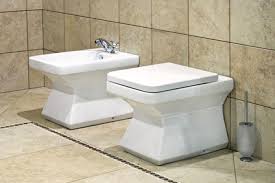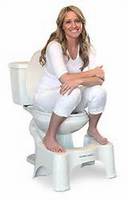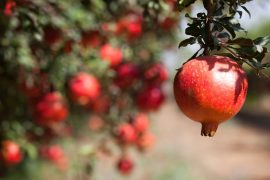Everybody Poops
Let’s be honest bathroom topics don’t go over well in conversation. In fact it’s a great way to almost instantly make someone feel uncomfortable. However you can learn a lot about your overall health and digestion by taking a glance in the toilet bowl before you flush. Noting the characteristics of your stool, the shape, color, size, smell and other features are all clues to what’s going on inside your body.
What‘s In A Stool?
Your stool is made up of about 75% water, the remaining 25% is made up of solid waste, bacteria, fiber, cells and mucus. Foods that contain soluble fiber such as nuts or beans are easily broken down and form a gel like substance that becomes part of the stool. Insoluble fiber such as carrots, corn or oats are harder for your body to digest, and if you don’t chew your food well, these item will show up in the toilet bowl relatively unchanged. (1)
Becoming familiar with the Bristol Stool Chart will give you an idea of different types of bowel movements. What’s considered ideal? Type 4. (2)
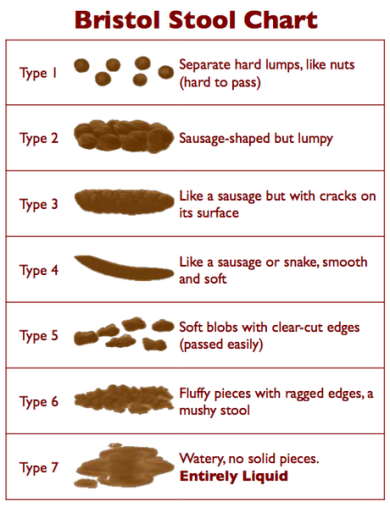
What’s Healthy?
• Medium to light brown in color
• S-shaped, like the shape of your lower intestine
• 1-2 inches in diameter and up to 18 inches in length
• Smooth, soft and one long shape
• Uniform texture
• Natural smell (not overwhelming or repulsive odor)
• Sinks slowly and without a loud splash that gets your caboose wet
What’s Not?
• Stools that are hard to pass, painful to pass
• Hard lumps or pieces
• Stools that float
• Undigested foods
• Bowel movements that are thin like a pencil
• White, pale or gray stools
• Black, tar-like, pale or bright red stools
• Yellow
• Mucus in Stools
Colorful Stools
Stools can be brown, grey, white, green, reddish, black or yellow. Before you panic about what you see, think about what you’ve eaten recently. If you consumed beets your stool may have a reddish color to it, if it’s green, it could be from eating a lot of greens or taking chlorella or spirulina. Black stools can be a result of medications or eating a lot of black licorice. Color can also reflect a number of conditions that may require medical help. The bottom line is that if you are unsure of something you should contact your healthcare provider.
How Frequently Should You Have a Bowel Movement?
Anywhere from 3 bowel movements a day to 3 per week is considered in the normal range. What matters is what’s normal for you and how you feel. While “normal” is a somewhat relative term, what is important is that you are consistent in your routine. Some people go in the morning only, or 2-3 times during the day. A decrease or increase in your movements can be due to a dietary change, gastrointestinal disorders or illness.
It’s not normal to strain or spend excessive time in the bathroom trying to have a bowel movement. After a bowel movements you should feel like you had a complete elimination.
Remember passing a stool should require no more effort than urinating and if things are moving along as they should, it should take as long as urinating. If it’s not that easy or fast then your body needs some help.
What is Constipation?
Simply put, it is hard to pass, dry stools that require straining. On average it takes your body between 18 and 72 hours to convert food and have a bowel movement. Other signs of constipation can include nausea, sluggishness, cramps and bloating.
What Causes Constipation?
The most common reason for constipation is lack of fiber in your daily diet, accompanied by inadequate water consumption. On average adults need 35 grams of fiber a day to help the body form soft, bulky stools that are easy to pass. Most Americans consume half that number. To learn more about fiber intake click here.
Other factors can include (3, 4):
• Medication
• Eating large quantities of dairy
• Overuse of laxatives
• Antacids containing calcium or aluminum
• IBS
• Stress
• Parkinson’s disease or MS
To Sit or Squat?
While squatting may seem like some newfangled idea, it’s actually sitting that is the newer concept. Squatting is a natural posture used by children. The majority of the world’s population squats to relieve themselves. Somehow in Western culture we came to believe it just isn’t “proper”. Before the advent of the modern toilet, squatting was how it was done. Chair like toilets were first used by royalty, and later by “commoners”. With the creation of indoor plumbing the water closet was born, and squatting quickly went out of fashion. (5)
Anatomically speaking, sitting is not the most productive or healthy way to empty your bowels. Squatting actually helps to relax the puborectalis muscle and straightens the rectum, allowing for a more complete bowel release, as shown in the diagrams below.
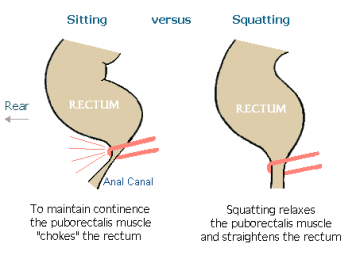
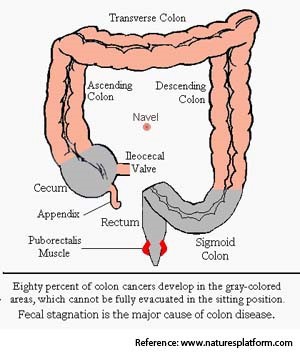
Need Help in the Bathroom?
Water-Most of us aren’t consuming enough water on a daily basis. Remember half your weight in ounces of water is a good rule of thumb. So if you weigh 150 pounds than 75 ounces of water is an excellent goal.
Fiber-Eat lots of fresh organic fruits and veggies that provide nutrients and fiber. An easy way to add more fiber to your diet can be achieved by drinking smoothies, sprinkling ground flaxseed on foods such as granola, cereal or toast or by adding chia to your diet. Click here for info on chia. Click here for daily fiber recommendations.
Magnesium– Magnesium is nature’s muscle relaxer. If you’re constipated, magnesium really gets things moving. Magnesium is needed to perform more than 300 different chemical reactions in the body. To learn more read, The Magnesium Miracle by Dr. Carolyn Dean.
Squatty Potty-This simple device slides right up against the toilet base when not in use. Simply slide out, prop your feet up and you’re in business. Because of your posture on this little stool, the puborectalis muscle will relax, your rectum will straighten and you will have a more complete evacuation of your bowels. The squatty potty comes in two heights a seven inch height and a nine inch height.
Boost Intestinal Flora with fermented foods or probiotics-Fermented foods and probiotics provide “good” bacteria to your gut which is critical for healthy digestive function.
Remember to discuss anything that concerns you with your doctor, especially changes in stools that are accompanied by abdominal pain.
References
(2) http://gapsdiet.com/Stools.html Bristol Chart
(3) http://www.nytimes.com/2005/08/02/science/02brod.html?pagewanted=all&_r=2&
(5) A History of Technology, Vol.IV: The Industrial Revolution, 1750-1850. (C. Singer, E Holmyard, A Hall, T. Williams eds) Oxford Clarendon Press, pps. 507-508, 1958

